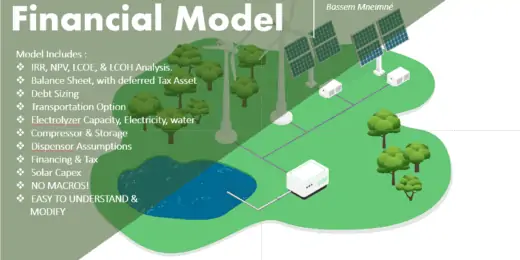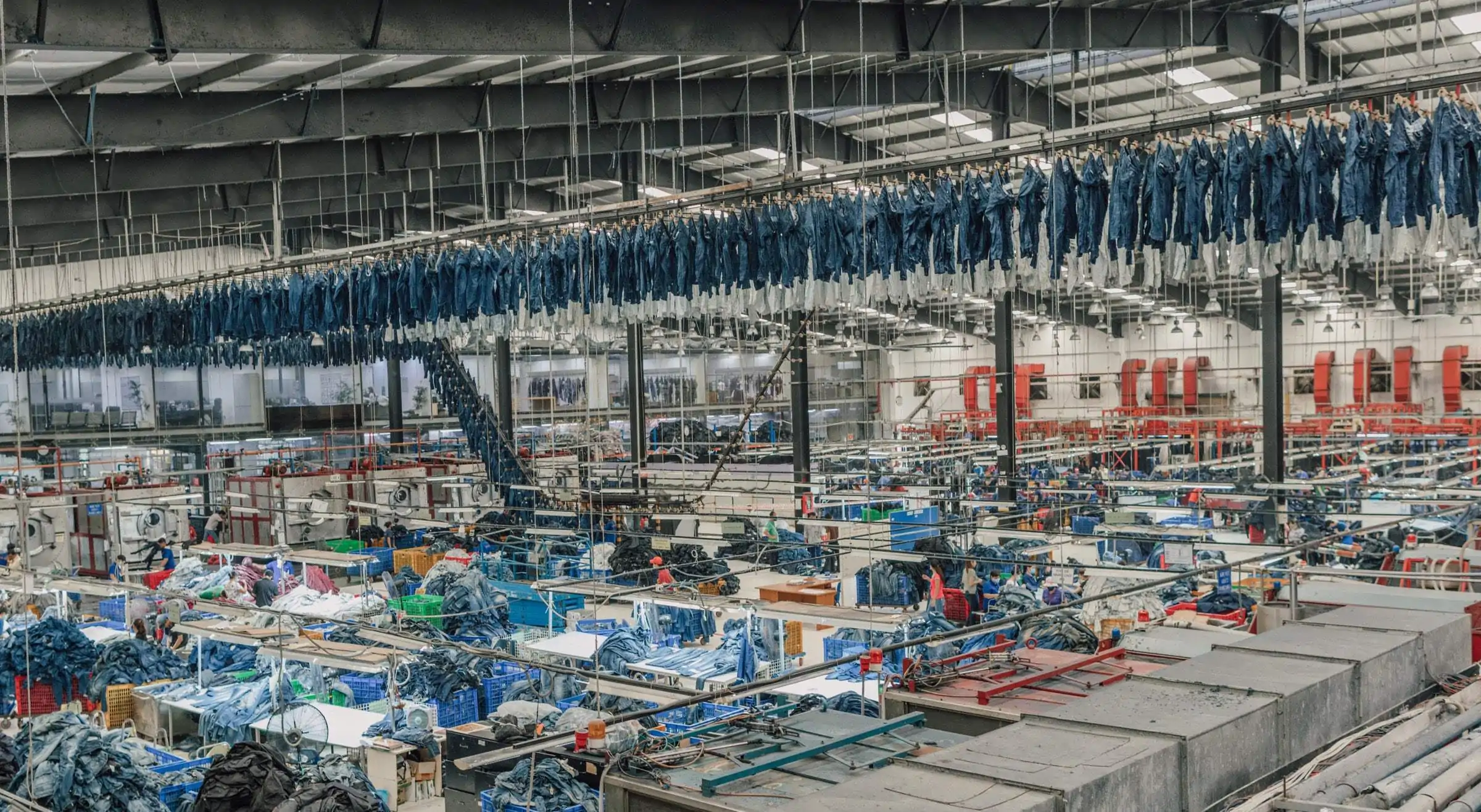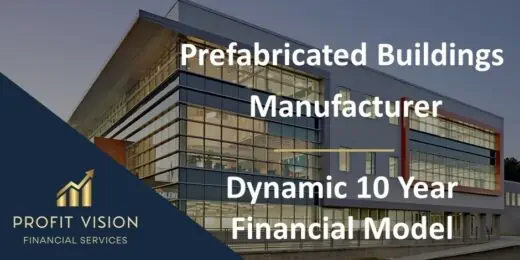Streamline Your Workflow: Manufacturing Financing

Streamlining your workflow in manufacturing requires efficient financing solutions. Optimal funding ensures seamless operation and growth potential.
Manufacturers face unique challenges when it comes to streamlining their operations. The need for robust financing options stands at the forefront, ensuring they can keep production lines moving and invest in the latest technologies. A tailored manufacturing financing strategy can help businesses maintain cash flow, purchase new equipment, and ramp up production without the burden of financial strain.
This approach not only supports operational efficiency but also drives innovation and competitive edge in the market. With the right financing in place, manufacturers can focus on what they do best: producing high-quality goods efficiently and effectively to meet the demands of their customers.
Manufacturing Financing Unpacked
Welcome to a close look at how Manufacturing Financing can transform your business operations. Imagine smoother production lines and less stress about capital. Let’s unpack the nitty-gritty of this financial tool.
Key Components Of Manufacturing Financing
To comprehend manufacturing financing, we must break it down into key parts:
- Equipment Loans: Funds to buy or lease machinery.
- Inventory Financing: Money to purchase raw materials.
- Accounts Receivable Financing: Borrowing against unpaid invoices.
- Working Capital Loans: Cash for daily expenses.
Each piece is crucial for running your factory without a hitch. The right mix can keep cash flowing and machines humming.
The Impact On Production Efficiency
Manufacturing financing does more than just ease the financial burden. It directly boosts production:
| Aspect | Impact |
|---|---|
| Advanced Equipment | Faster production with fewer errors. |
| Steady Material Supply | No delays waiting for stock. |
| Smooth Cash Flow | Continuous operation without financial hiccups. |
| Timely Order Fulfillment | Happy customers and repeat business. |
Efficiency is key in manufacturing. Financing is the oil that keeps the engine running smoothly. Investments in efficient equipment and resources yield better output. This lifts your company to new heights.
Identifying Your Financing Needs
Understanding the financial landscape is vital for any business in the manufacturing sector. Identifying your financing needs is the first step towards streamlining your workflow. It enables you to explore options that match your specific requirements. Effective management of your finances ensures uninterrupted production and helps in achieving your business goals.
Assessing Current Financial Health
Evaluating your current financial situation is crucial. It lays the groundwork for informed decision-making. Start by analyzing your balance sheet and income statements. Look for trends in your cash flow reports. Determine your company’s financial ratios such as liquidity, profitability, and leverage.
Forecasting Future Capital Requirements
Anticipating future expenses helps in maintaining financial stability. Forecast your capital needs for the next few months to several years. Consider growth projections, equipment investments, and potential market expansions. Establish a budget to cover these costs while keeping your business competitive and innovative.
| Time Frame | Capital Needs |
|---|---|
| Short-term | Operational costs, inventory purchases |
| Mid-term | Equipment upgrades, marketing campaigns |
| Long-term | Expansion plans, new product lines |
Preparing for future needs prevents financial strain. Use this table as a guide to outline your capital requirements effectively.
Types Of Manufacturing Loans
Understanding the different types of manufacturing loans can help businesses secure the right financing. This guide will help explain each option. Let’s explore the types of loans that can help streamline your workflow.
Traditional Bank Loans Versus Alternative Lending
Traditional bank loans are a common choice for financing. They often have lower interest rates. However, they require a strong credit history. Approval can take time.
Alternative lending is quicker to access. This option suits businesses with a less established credit history. Alternative lenders offer flexibility. Interest rates may be higher than bank loans.
| Loan Type | Pros | Cons |
|---|---|---|
| Traditional Bank Loans | Lower interest rates, long-term financing | Requires strong credit, longer approval time |
| Alternative Lending | Fast access, flexible requirements | Higher interest rates |
Equipment Financing And Leasing Options
For buying machinery, equipment financing is ideal. It uses the equipment as collateral, leading to potentially better terms. Payback terms align with the equipment’s lifespan.
Leasing options offer a way to use equipment without buying it. Monthly payments are made for using the equipment. At the lease’s end, you may have the option to purchase the equipment.
- Equipment Financing: Own the equipment, potential tax benefits.
- Leasing: Lower upfront cost, upgrade options.
Evaluating Lenders For Best Fit
Finding the right manufacturing financing can be like fitting a square peg in a round hole. The key to a streamlined workflow is a lender that meshes with your business goals. Consider the finer details of each offer. Interest rates and loan terms vary. Not all glitter is gold.
Interest Rates And Loan Terms
When it comes to manufacturing financing, the cost of borrowing is a prime concern. Look for competitive interest rates that align with your financial plan. Evaluate the loan terms being offered.
Think long-term impact. Shorter loan periods might mean higher payments, but less interest over time. Contrastingly, longer terms could ease monthly payments but cost you more in the long haul.
Key points to compare:
- Annual Percentage Rate (APR) – True cost of borrowing
- Loan term length – Time to repay the loan
- Monthly payment – Budget fit
- Total cost of loan – Including all fees
Understanding The Fine Print
Terms and conditions deserve your attention. They hold details that could bind your business to unfavorable conditions. Scrutinize the fine print for prepayment penalties, processing fees, and collateral requirements.
Look out for:
| Term | Description |
|---|---|
| Prepayment Penalty | Fees for early loan repayment |
| Late Payment Fees | Costs incurred from missed deadlines |
| Processing Fees | Charges for handling the loan application |
| Collateral | Assets used to secure the loan |
Meticulous lender evaluations ensure a best-fit match for your manufacturing financing needs. Remember, read every line before signing on the dotted line.
Preparing For The Financing Process
Securing manufacturing financing can propel your workflow to new heights. It’s important to gear up for the application by prepping meticulously. Doing so can enhance your chances of approval and ensure a smooth journey. Let’s dive into the key steps you need to take.
Gathering Essential Documentation
The first step is to gather the paperwork. Lenders will want to see various documents to assess your business’s health. You’ll need to compile:
- Financial statements: These showcase your company’s profitability and stability.
- Business plans: They outline your future goals and how you’ll get there.
- Tax returns: These provide a snapshot of your financial history.
- Legal documents: These verify your company’s legitimacy.
Having these ready will show lenders you’re organized and serious.
Strengthening Your Loan Application
A strong loan application can make all the difference. To boost your chances, focus on:
- Credit score: This is a key indicator of your financial responsibility.
- Cash flow: Demonstrate your business can cover the loan payments.
- Collateral: This secures the loan and provides lenders with assurance.
- Detailed plans: Show how the loan will help grow your business.
Each element carries weight and helps lenders feel confident in your ability to repay.
Streamlining The Manufacturing Process
Efficient workflows are the backbone of any successful manufacturing operation. An optimized manufacturing process can lead to reduced costs, increased productivity, and a stronger market position. In this section, we explore key strategies to empower manufacturers to streamline their processes.
Investing In Automation And Technology
Manufacturers that embrace automation and technology find themselves steps ahead in productivity. By investing in the right tools, companies can minimize manual labor and speed up production cycles. These investments lead to more consistent output and the ability to meet demand swiftly.
- CNC machines for precision manufacturing
- Robotics for assembly and packaging
- ERP systems for resource management
Reducing Waste With Lean Manufacturing
Lean manufacturing principles target waste elimination and optimization. By analyzing each step of the production process, manufacturers can identify non-value-added activities. Removing these excesses means streamlined operations and better resource use.
| Lean Principle | Benefit |
|---|---|
| 5S Methodology | Organized workspace |
| Kaizen | Continuous improvement |
| Kanban | Efficient inventory management |
Impact Of Financing On Workflow
Imagine a factory floor with machines humming in harmony and products rolling out efficiently. This dream can become reality for manufacturers through smart financing options. Accessing extra funds impacts workflow in significant ways. It enables smoother operations and unlocks potential for expansion. Let’s explore two crucial areas financing helps to enhance.
Improving Supply Chain Management
On-time materials are vital for steady production.
With available financing, businesses can:
- Buy in bulk – reducing costs and ensuring supply.
- Invest in automation – speeding up the supply process.
- Build stronger relationships with suppliers – possibly netting perks like discounts or extended payment terms.
This strategic infusion of funds helps avert bottlenecks. It keeps the gears of manufacturing oiled. Businesses stay competitive and responsive.
Facilitating Rapid Scaling And Growth
Growth demands investment.
Financing serves as a springboard for such ambitions:
- Expand production lines – to meet growing demand.
- Enhance existing facilities – for greater efficiency.
- Hire more staff – bolstering the workforce for peak periods.
- Upgrade technology – staying ahead in a tech-driven world.
Proper financing prepares businesses for increased orders. It allows them to scale without strain on existing resources. Companies ready to grow do not have to miss out on opportunities due to lack of funds.
Success Stories: Financing In Action
Discover inspirations behind enduring manufacturing successes. Real-world examples illustrate how smart financing solutions can transform operations.
Case Studies Of Manufacturing Turnarounds
Case studies showcase the remarkable transformations in the manufacturing sector, enabled by strategic financing. Let’s delve into these compelling narratives.
- Automotive supplier overcame supply chain disruptions.
- Textile producer upgraded machinery for eco-friendly output.
- Electronics company optimized inventory with better cash flow.
Best Practices From Industry Leaders
Learn key strategies from top industry players. Here’s what leaders do to ensure financial stability and process efficiency.
| Company | Strategy | Outcome |
|---|---|---|
| ABC Metals | Focused investments in automation | Increase production by 50% |
| XYZ Plastics | Green financing for sustainable operations | Reduced emissions by 30% |
| 123 Fabrics | Risk management through diverse funding | Smooth operations even during market volatility |
Navigating Repayment And Growth
Manufacturing firms face unique challenges, especially when it comes to financing. Effectively balancing loan repayments while funding growth is no small feat. Savvy manufacturers navigate these waters with strategic planning and keen financial management.
Managing Cash Flow And Repayments
Cash flow is king in the world of manufacturing. Staying on top of repayments while keeping enough liquid assets is crucial. Follow these tips to ensure smooth cash flow management:
- Monitor expenses: Keep a close eye on outflows.
- Invoice promptly: Reduce delays in receivables.
- Negotiate terms: Work with lenders for manageable repayments.
- Lease equipment: Consider leasing to keep cash available.
Use financial tools to forecast and plan. This forethought helps prevent cash crunches, making repayment less stressful.
Planning Long-term Financial Strategy
Long-term planning is essential for sustainable growth. Set clear objectives with these strategies:
| Goal | Action | Outcome |
|---|---|---|
| Expand production | Invest in high-capacity machines | Increase output |
| Reduce debt | Refinance at lower interest rates | Less financial strain |
| Boost revenue | Diversify product lines | Open new markets |
Partner with financial experts for advice that aligns with your company’s vision. Implementing the right financial strategies fuels progress without compromising day-to-day operations.
Staying Ahead With Continuous Improvement
Staying Ahead with Continuous Improvement is vital in manufacturing.
Manufacturers must evolve to stay competitive. This means improving processes.
Firms can lower costs and enhance quality with effective financing.
Incorporating Feedback Loops
Incorporating Feedback Loops
Feedback loops help factories fix issues quickly. They use customer and employee input.
- Collect data from different sources.
- Analyze the information.
- Apply changes where needed.
Continuous feedback is a cornerstone of growth. It helps anticipate customer needs. It also streamlines operations.
Keeping Abreast of Industry Innovations
Keeping Abreast Of Industry Innovations
Staying updated with trends is critical. Innovation keeps manufacturers ahead.
| Method | Benefit |
|---|---|
| Automation | Speeds up production |
| AI | Improves decision-making |
| 3D Printing | Prototyping is cheaper and faster |
Knowing the latest in technology helps. It can lead to better product quality. It can also reduce manufacturing time.
Frequently Asked Questions
What Is Manufacturing Financing?
Manufacturing financing refers to specialized loans or funding options. They provide capital to manufacturers for operations, expansion, or equipment.
How Does Manufacturing Financing Benefit Businesses?
It offers quick capital for growth, equipment update, and operational costs. This boosts production efficiency and market competitiveness for businesses.
What Are Types Of Manufacturing Financing?
Common types include term loans, equipment financing, and lines of credit. Invoice factoring and asset-based lending are also popular options.
Can Startups Secure Manufacturing Financing?
Yes, startups can obtain manufacturing financing. Lenders may require a solid business plan and potential for growth as assurance.
Conclusion
Embracing the right financing options can transform your manufacturing operations. Strategic investment spurs growth, innovation, and efficiency. Explore various funding avenues to elevate your workflow. Remember, adept financing is key to seamless production processes and robust business health. Start optimizing your manufacturing workflow with smart financing today.



















































